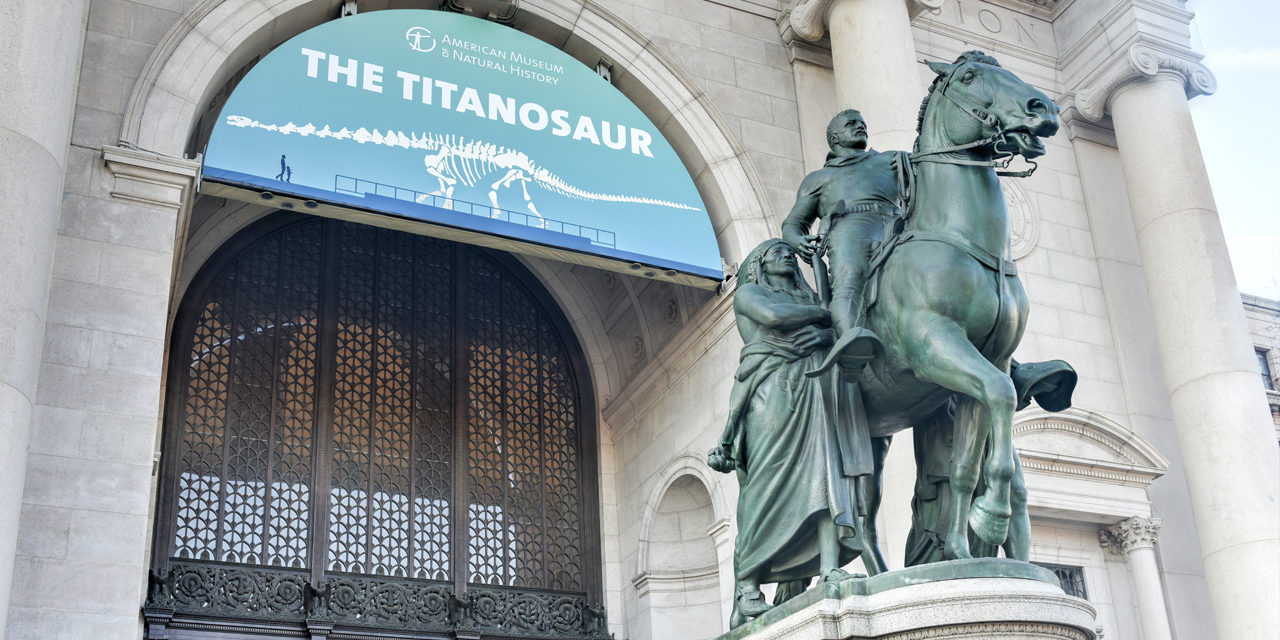A statue of Theodore Roosevelt, often considered one of the greatest presidents in American history, will be removed from the entrance of the American Museum of Natural History by the City of New York “because it explicitly depicts black and indigenous people as subjugated and racially inferior.”
This summer, millions of families across the country will enjoy the sites of Yosemite, the Grand Canyon, Yellowstone and the numerous other natural wonders of the country under the protection of the U.S. Park Service. Each of these national parks was established under the direction of President Theodore “Teddy” Roosevelt in order to preserve the nation’s natural history. He is often considered the “conservationist president,” and to honor his legacy, including his time as the Governor of New York, the American Museum of Natural History and the statue in front of it of Roosevelt in New York City was built as part of a memorial to his legacy.
But the statue has now become the latest casualty of the effort to remove and destroy American history.
The museum has recently announced that it will remove the statue dedicated to the 26th president of the United States.
In an official press release, Ellen Futter, President of the American Museum of Natural History, said, “As we strive to advance our institution’s, our City’s, and our country’s passionate quest for racial justice, we believe that removing the Statue will be a symbol of progress and of our commitment to build and sustain an inclusive and equitable Museum community and broader society.”
A memo to staff explains some of the reasoning why this decision was made now, not years or even decades ago, “Over the last few weeks, our Museum community has been profoundly moved by the ever-widening movement for racial justice that has emerged after the killing of George Floyd. We also have watched as the attention of the world and the country has increasingly turned to statues and monuments as powerful and hurtful symbols of systemic racism. The Equestrian Statue that sits on New York City public park land in front of the Museum’s Central Park West entrance is part of the New York State memorial to Theodore Roosevelt…The Statue has long been controversial because of the hierarchical composition that places one figure on horseback and the others walking alongside, and many of us find its depictions of the Native American and African figures and their placement in the monument racist.”
The statue has Roosevelt on horseback while a Native American man and an African American man walk next to him.
When the statue was originally constructed, according to the Board of Trustees of the New York State Roosevelt Memorial, it was intended to “express Roosevelt’s life as a nature lover, naturalist, explorer and author of works of natural history.”
The architect, John Russell Pope, described it this way, “In the center of the terrace…will arise a polished granite pedestal bearing an equestrian statue of Roosevelt with two accompanying figures on foot, one representing the American Indian and the other the primitive African. This heroic group…will symbolize the fearless leadership, the explorer, benefactor and educator….”
James Earle Fraser, who sculpted the statue, had had similar thoughts, “The two figures at [Roosevelt’s] side are guides symbolizing the continents of African and America, and if you choose may stand for Roosevelt’s friendliness to all races.”
Of course, in this era of heightened racial tensions and daily destruction of history, a statue like this is automatically labeled racist and offensive, despite the intentions of the original designers and the board of trustees.
These cultural warriors are quick to forget, or likely don’t even know, that Theodore Roosevelt was the first president to invite an African American man, Booker T. Washington, to dinner at the White House. The meal caused a sensation at the time, with some truly vitriolic things coming from Southern newspapers and politicians after it was announced. In fact, Roosevelt had dinner with African Americans quite frequently in New York during his governorship.
Art and memorials are about artistic expression of that particular person or event. In this era, many people are so eager to jump to the worst possible interpretation of historic statues without considering the lesser, more mundane, explanations.
And what’s next? The Jefferson Memorial, the Washington Memorial, Mount Rushmore (where Roosevelt is one of four presidents depicted), Statue of Liberty, Lincoln Memorial? All could be next on the chopping block. If these activist (and uneducated) mobs have their way, there would be no memorials to the great men and women of history.
So, as the political pressure intensifies, it may be a good idea to plan that family trip to Mount Rushmore before its too late.
Photo from Felix Lipov / Shutterstock.com






